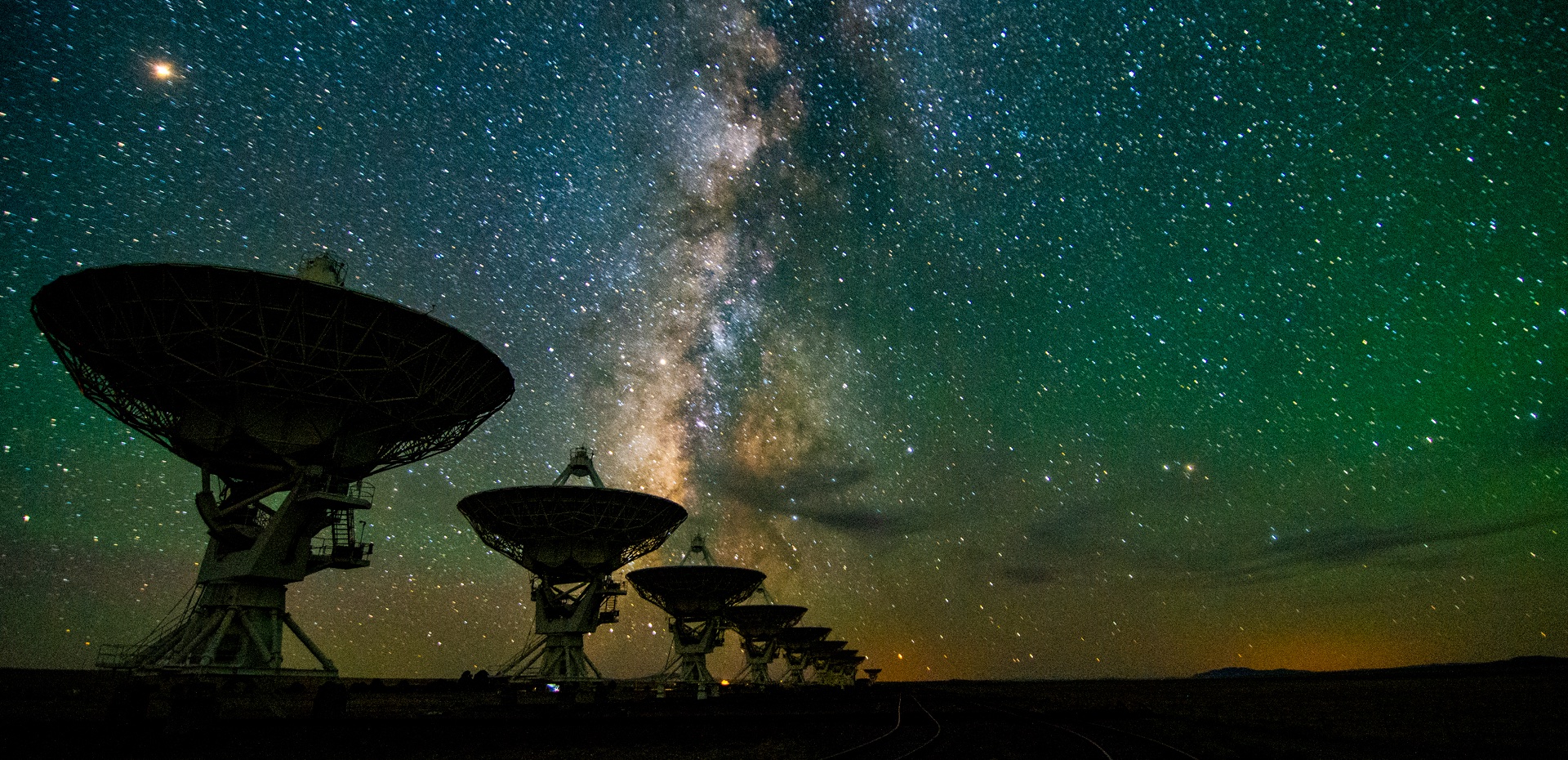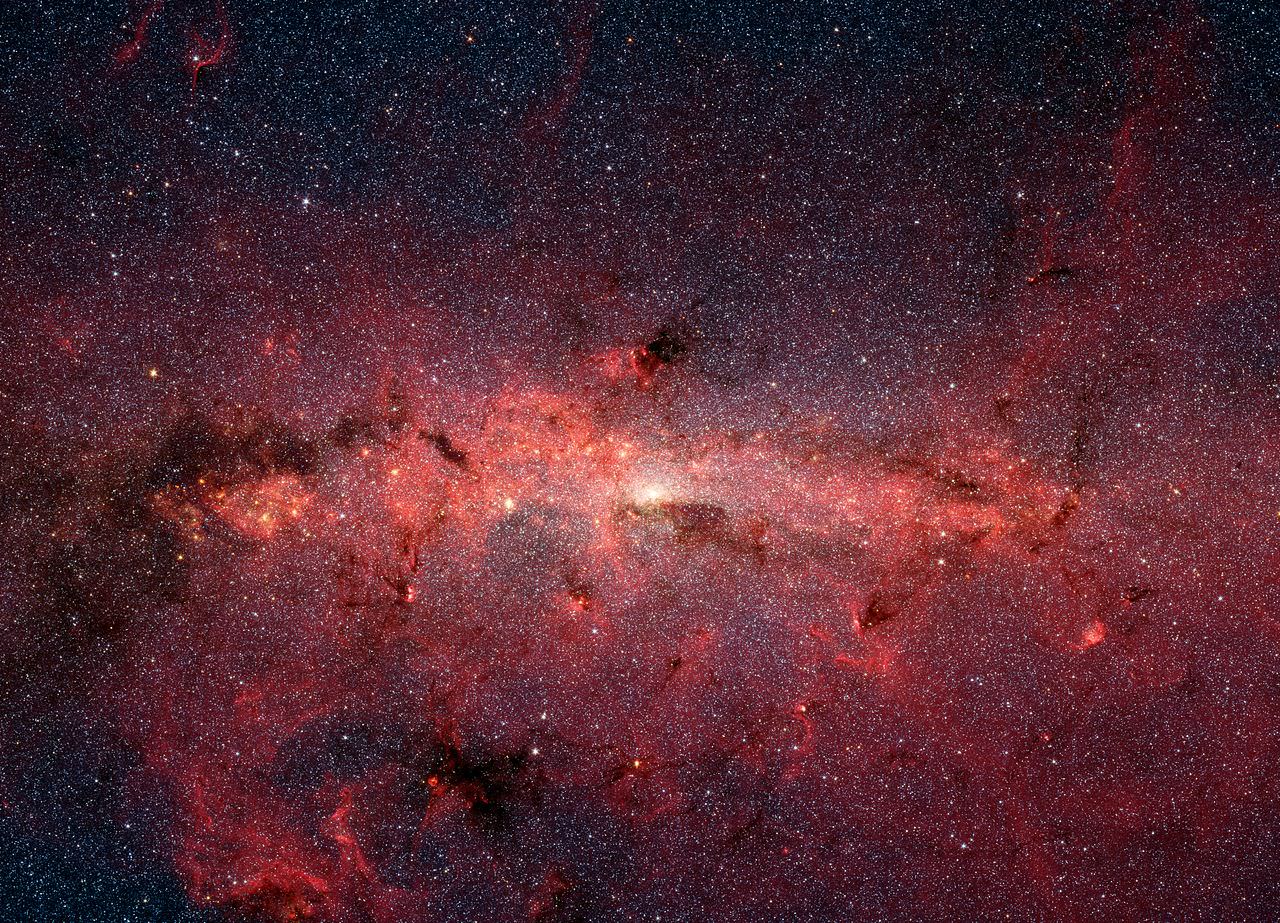The Milky Way is a barred spiral galaxy, maybe even a grand design spiral galaxy. We can’t be sure from our vantage point. But one thing is certain: there aren’t many disk galaxies like it in our part of the Universe called the supergalactic plane.
Continue reading “There Aren’t Many Galaxies Like The Milky Way Nearby. Now We Know Why”Galaxies Like the Milky Way are the Best for Life
Scientists have speculated that given the sheer number of galaxies in our Universe – modern estimates are as high as 2 trillion – that there must be infinite opportunities for life to emerge. It has also been theorized that galaxies (like stars) have habitable zones, where star systems located too close to the core or too far out in the spiral arms will be exposed to too much radiation for life to emerge.
But are certain types of galaxies more likely to produce intelligent life? Not that long ago, scientists believed that giant elliptical galaxies – which are substantially larger than spiral galaxies (like the Milky Way) – are a far more likely place to find advanced civilizations. But according to new research from the University of Arkansas, these galaxies may not be the cradles of civilization they were previously thought to be.
Read morTo eWhat Part of the Milky Way Can We See?
When you look up and see the Milky Way, you’re gazing into the heart of our home galaxy. What, exactly, are we looking at?
Anyone who’s ever been in truly dark skies has seen the Milky Way. The bright band across the sky is unmistakable. It’s a view of our home galaxy from within.
As you stare out into the skies and see that splash of stars, have you ever wondered, what are you looking at? Which parts are towards the inside of the galaxy and which parts are looking out? Where’s that supermassive black hole you’ve heard so much about?
In order to see the Milky Way at all, you need seriously dark skies, away from the light polluted city. As the skies darken, the Milky Way will appear as a hazy fog across the sky.
Imagine it as this vast disk of stars, with the Sun embedded right in it, about 27,000 light-years from the core. We’re seeing the galaxy edge on, from the inside, and so we see the galactic disk as a band that forms a complete circle around the sky.
Which parts you can see depend on your location on Earth and the time of year, but you can always see some part of the disk.
The galactic core of the Milky Way is located in the constellation Sagittarius, which is located to the South of me in Canada, and only really visible during the Summer. In really faint skies, the Milky Way is clearly thicker and brighter in that region.
Want to know the exact point of the galactic core? It’s right… there.
During the Winter, we’re looking away from the galactic core to the outer regions of the galaxy. It still has the same band of stars, but it’s thinner and without the darker clouds of dust that obscure our view to the galactic core.
How do astronomers even know that we’re in a spiral galaxy anyway?
There are two major types of galaxies, spiral galaxies and elliptical galaxies.
Elliptical galaxies are made up of so many galactic collisions, they’re nothing more than vast balls of trillions of stars, with no structure. Because we can see a distinct band in the sky, we know we’re in some kind of spiral.
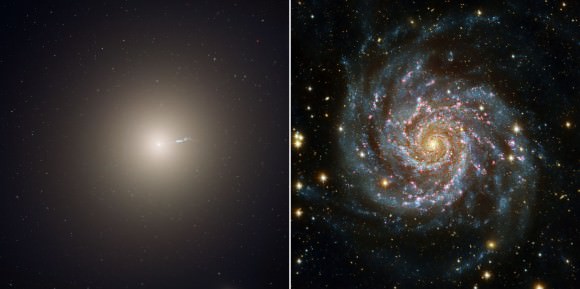
Astronomers map the arms by looking at the distribution of gas, which pulls together in star forming spiral arms. They can tell how far the major arms are from the Sun and in which direction.
The trick is that half the Milky Way is obscured by gas and dust. So we don’t really know what structures are on the other side of the galactic disk. With more powerful infrared telescopes, we’ll eventually be able to see though the gas and dust and map out all the spiral arms.
If you’ve never seen the Milky Way with your own eyes, you need to. Get far enough away from city lights to truly see the galaxy you live in.
The best resource is “The Dark Sky Finder”, we’ll put a link in the show notes.
Have you ever seen the Milky Way? If not, why not? Let’s hear a story of a time you finally saw it.
And if you like what you see, come check out our Patreon page and find out how you can get these videos early while helping us bring you more great content!
First Glimpse of a Young Galactic Core Forming in the Early Universe
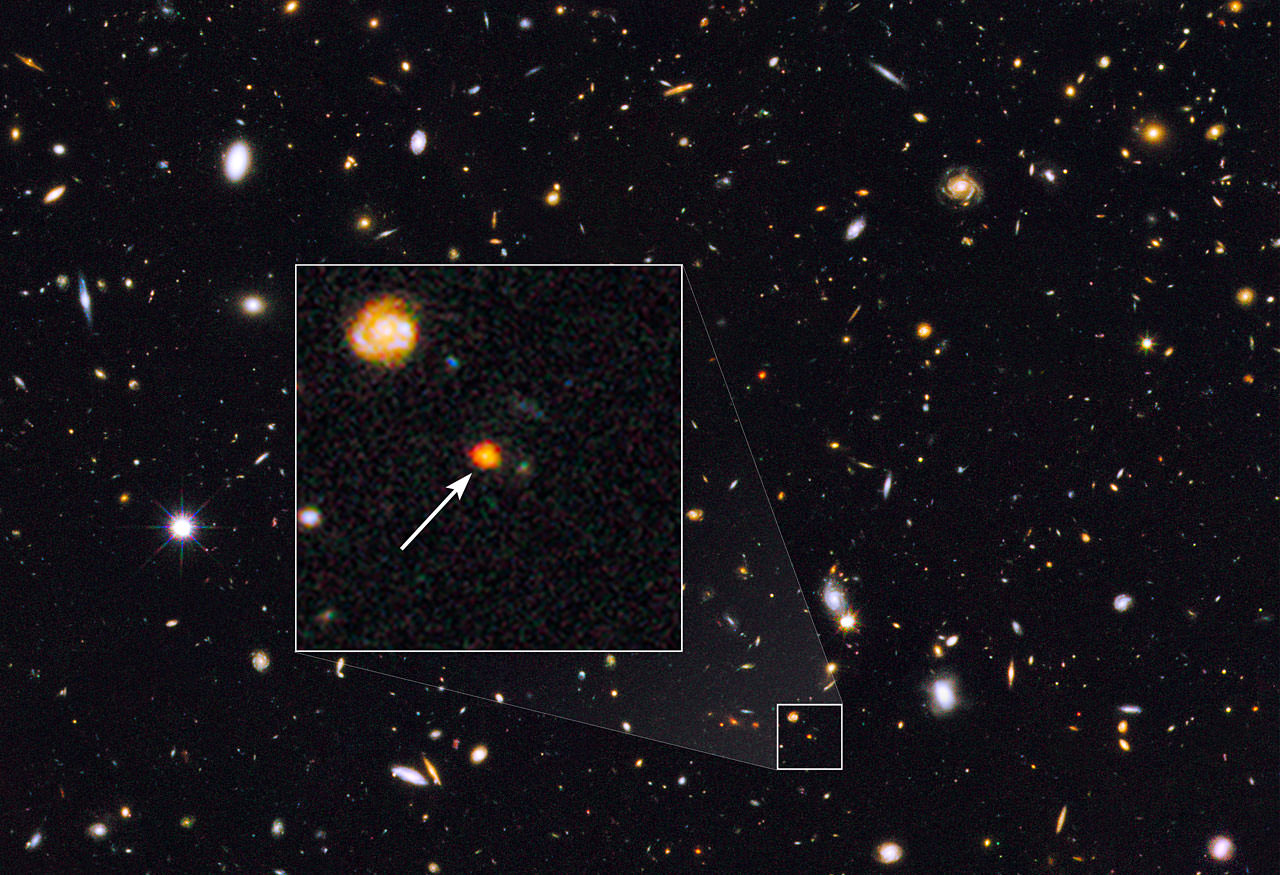
Astronomers have spotted, for the first time, a dense galactic core blazing with the light of millions of newborn stars in the early universe.
The finding sheds light on how elliptical galaxies, the large, gas-poor gatherings of older stars, may have first formed in the early universe. It’s a question that has eluded astronomers for decades.
The research team first uncovered the compact galactic core, dubbed GOODS-N-774, in images from the Hubble Space Telescope. Later observations from the Spitzer Space Telescope, the Herschel Space Observatory, and the W.M. Keck Observatory helped make this a true scientific finding.
The core formed 11 billion years ago, when the universe was less than 3 billion years old. Although only a fraction of the size of the Milky Way, at that time it already contained above twice as many stars as our own galaxy.
Theoretical simulations suggest that giant elliptical galaxies form from the inside out, with a large core marking the very first stages of formation. But most searches for these forming cores have come up empty handed, making this a first observation and a phenomenal find.
“We really hadn’t seen a formation process that could create things that are this dense,” explained lead author Erica Nelson from Yale University in a press release. “We suspect that this core-formation process is a phenomenon unique to the early universe because the early universe, as a whole, was more compact. Today, the universe is so diffuse that it cannot create such objects anymore.”
Alongside determining the galaxy’s size from the Hubble images, the team dug into archived far-infrared images from Spitzer and Herschel to calculate how fast the compact galaxy is creating stars. It seems to be producing 300 stars per year, a rate 30 times greater than the Milky Way.
The frenzied star formation likely occurs because the galactic core is forming deep inside a gravitational well of dark matter. Its unusually high mass constantly pulls gas in, compressing it and sparking star formation.
But these bursts of star formation create dust, which blocks the visible light. This helps explain why astronomers haven’t seen such a distant core before, as they may have been easily missed in previous surveys.
The team thinks that shortly after the early time period we can see, the core stopped forming stars. It likely then merged with other smaller galaxies, until it transformed into a much greater galaxy, similar to the more massive and sedate elliptical galaxies we see today.
“I think our discovery settles the question of whether this mode of building galaxies actually happened or not,” said coauthor Pieter van Dokkum from Yale University. “The question now is, how often did this occur?”
The team suspects that other galactic cores are abundant, but hidden behind their own dust. Future infrared telescopes, such as the James Webb Space Telescope, should be able to find more of these early objects.
The paper was published Aug. 27 in Nature and is available online.
‘Green Valley’ Of Galaxies Shows Off Gas And Star Formation
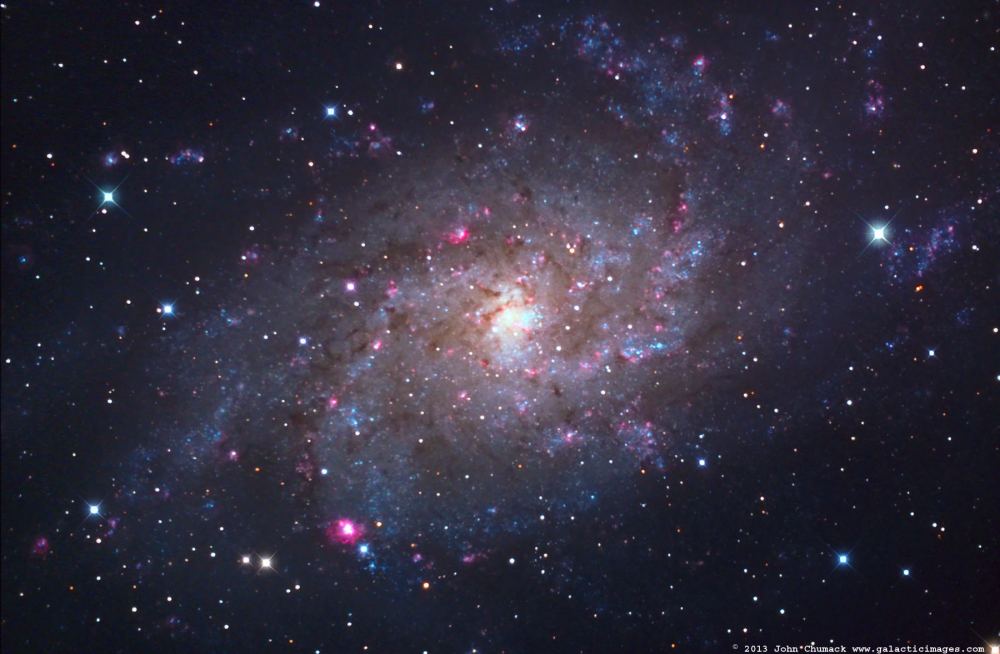
We keep saying this: the universe is more complex than it appears. Conventional thinking in galaxy research postulates that spiral galaxies have star-forming areas, while ellipticals do not due to a lack of gas. While this thinking has been debunked, there’s now emerging research showing a “green valley” of galaxies somewhat in between these two types.
Basically, the research (which includes participation from citizen scientists in the Galaxy Zoo project) is showing that there are two different populations of “green” galaxies, between ellipticals and spirals. Further, what happens to star formation based upon gas in the area.
“In this paper, we take a look at the most crucial event in the life of a galaxy: the end of star formation. We often call this process ‘quenching’ and many astrophysicists have slightly different definitions of quenching. Galaxies are the place where cosmic gas condenses and, if it gets cold and dense enough, turns into stars. The resulting stars are what we really see as traditional optical astronomers,” wrote Kevin Schawinski, a Ph.D. student at the University of Oxford who is on the Galaxy Zoo team, in a blog post.
“Not all stars shine the same way though: stars much more massive than our sun are very bright and shine in a blue light as they are very hot. They’re also very short-lived. Lower mass stars take a more leisurely pace and don’t shine as bright (they’re not as hot). This is why star-forming galaxies are blue, and quiescent galaxies (or ‘quenched’ galaxies) are red: once star formation stops, the bluest stars die first and aren’t replaced with new ones, so they leave behind only the longer-lived red stars for us to observe as the galaxy passively evolves.”
You can read more information in the blog post. The study, which has been accepted for publication in the Monthly Notices of the Royal Astronomical Society, is available on preprint site Arxiv.

